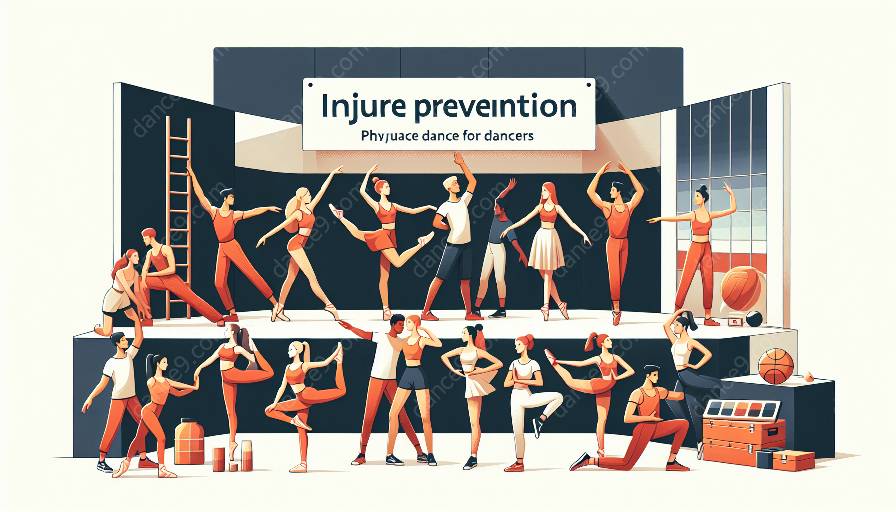Dancing is a beautiful and expressive art form that requires strength, agility, and precision. However, like any physical activity, dancing comes with the risk of injuries. To ensure a safe and fulfilling dance experience, dancers can incorporate injury prevention into their daily practice and performance routines. By focusing on both physical and mental health, dancers can minimize the risk of injuries and enhance their overall well-being.
Physical and Mental Health in Dance
Before delving into injury prevention techniques, it's important to highlight the significance of maintaining physical and mental health in dance. Dancers undergo rigorous training and often face intense performance schedules, which can take a toll on their bodies and minds. In addition to physical strength and flexibility, dancers must prioritize mental well-being to perform at their best and protect themselves from burnout and stress-related issues.
Incorporating Injury Prevention into Daily Practice
One of the fundamental ways dancers can promote injury prevention is by incorporating it into their daily practice. This involves creating a routine that focuses on building strength, flexibility, and coordination, while also paying attention to proper warm-up and cool-down techniques. Warm-up exercises should include dynamic movements to increase blood flow and prepare the body for more intense activity, while cool-down routines can consist of static stretching and relaxation techniques to support muscle recovery.
Strength and Conditioning: Dancers can benefit from strength and conditioning exercises that target the muscles used in their specific style of dance. By maintaining strong and balanced musculature, dancers can better support their movements and reduce the risk of strains and overuse injuries.
Fitness Cross-Training: Cross-training with activities such as Pilates, yoga, and swimming can complement a dancer's training regimen, offering a balanced approach to strength-building, flexibility, and cardiovascular health.
Technique Refinement: Focusing on proper technique not only enhances performance quality but also minimizes the risk of injuries. Paying attention to alignment, posture, and movement mechanics is crucial for preventing strain and stress on the body.
Integrating Safety into Performance Routines
When preparing for performances, dancers must apply injury prevention principles to their routines to ensure a safe and successful experience. This involves implementing strategies that support physical and mental well-being leading up to and during performances.
Rest and Recovery: Adequate rest and recovery time are essential for dancers to allow their bodies to heal and rejuvenate. Dancers should prioritize sleep, nutrition, and hydration to optimize their physical condition for performances.
Mental Preparedness: Mental preparedness is equally important for injury prevention. Dancers can benefit from relaxation techniques, visualization, and positive self-talk to manage performance anxiety and reduce the risk of mental and emotional strain.
Communication and Boundaries: Open communication among dancers, choreographers, and instructors is crucial for identifying and addressing concerns related to physical and mental health. Establishing boundaries and advocating for self-care can contribute to a supportive and safe performance environment.
Maintaining a Balanced Approach
As dancers prioritize injury prevention within their daily practice and performance routines, it's essential to maintain a balanced approach that considers both physical and mental health. Seeking guidance from certified dance educators, physical therapists, and mental health professionals can provide valuable support and resources for injury prevention and overall well-being.
By integrating injury prevention strategies into their practice and performance routines, dancers can reduce the risk of injuries, enhance their performance quality, and enjoy a sustainable dance career.


































